Abstract
The Hawaiian Islands are renowned for some of the most spectacular species radiations in the world. Most of these radiations have been attributed to single colonization events, although the evidence supporting monophyletic origins is often poorly resolved and/or ambiguous. Without a concrete understanding of the origins of species radiations, it is impossible to understand the phylogenetic pattern of species proliferation or the spectrum of morphological, ecological, and behavioral modifications attributable to a single colonist. In this study we examined the species radiation of the spider genus Tetragnatha in Hawaii. Unlike their mainland congeners, the Hawaiian Tetragnatha are extremely diverse in morphology, ecology, and behavior. We tested whether this diversity arose from a single or multiple colonization events. We coupled morphological (37 characters) and molecular (sequence from the 12S ribosomal subunit of mitochondrial DNA) approaches to assess the phylogenetic position of the Hawaiian Tetragnatha relative to continental congeners and to examine evidence for monophyly. We provide evidence that the Hawaiian Tetragnatha emanate from multiple origins. At least two independent species radiations, the "spiny-leg" clade and the web-building species Tetragnatha stelarobusta and Tetragnatha acuta, have arisen from one or more founder events. Two additional natural colonizations have resulted in the establishment of non-speciose lineages, as represented by Tetragnatha hawaiensis and Doryonychus raptor.
Full text
PDF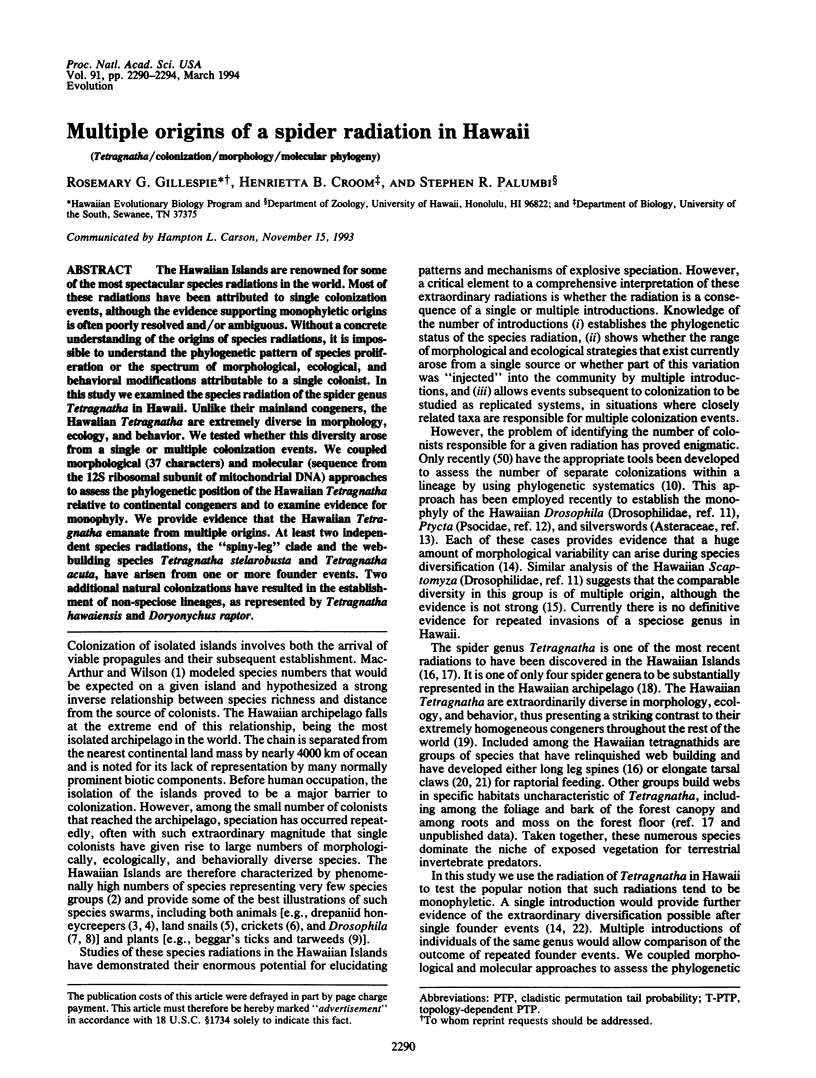
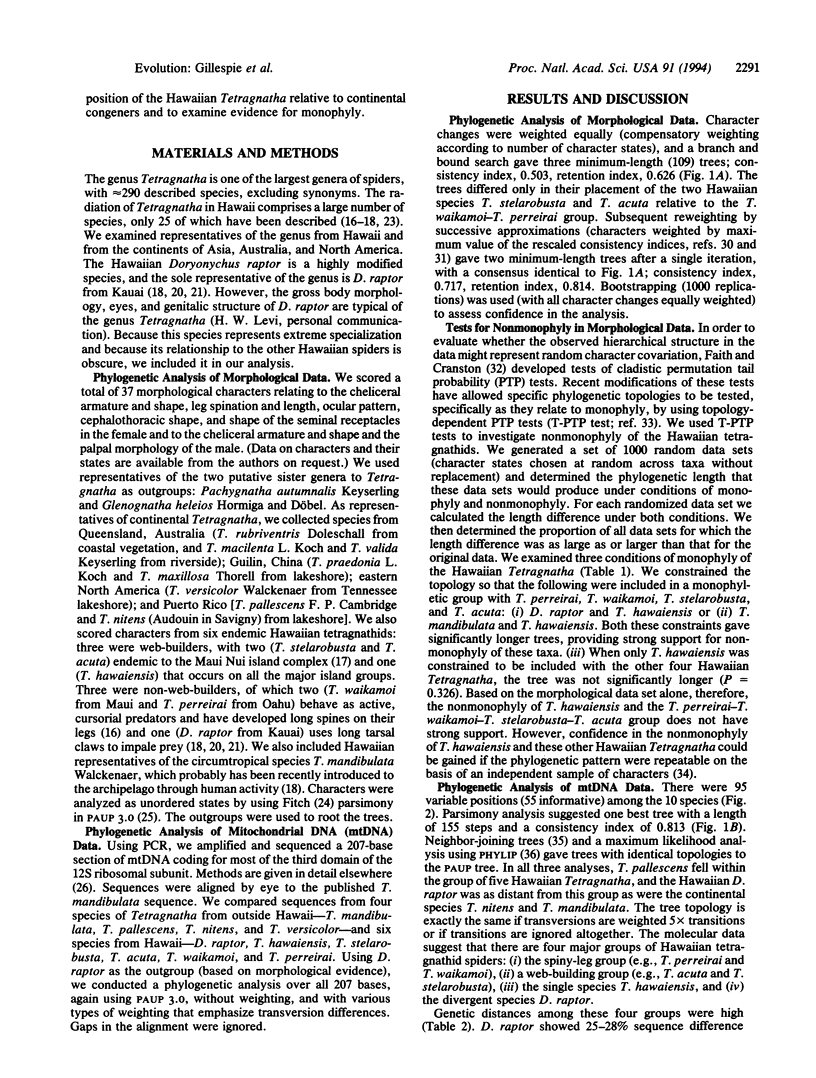
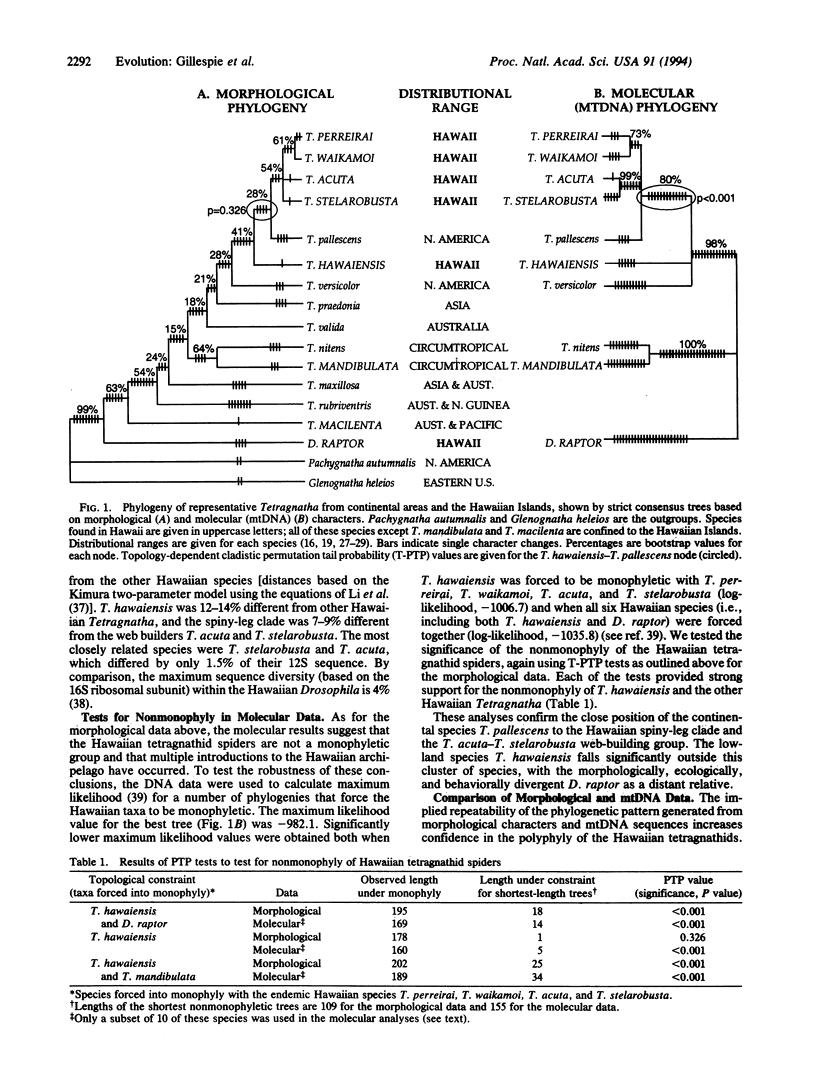
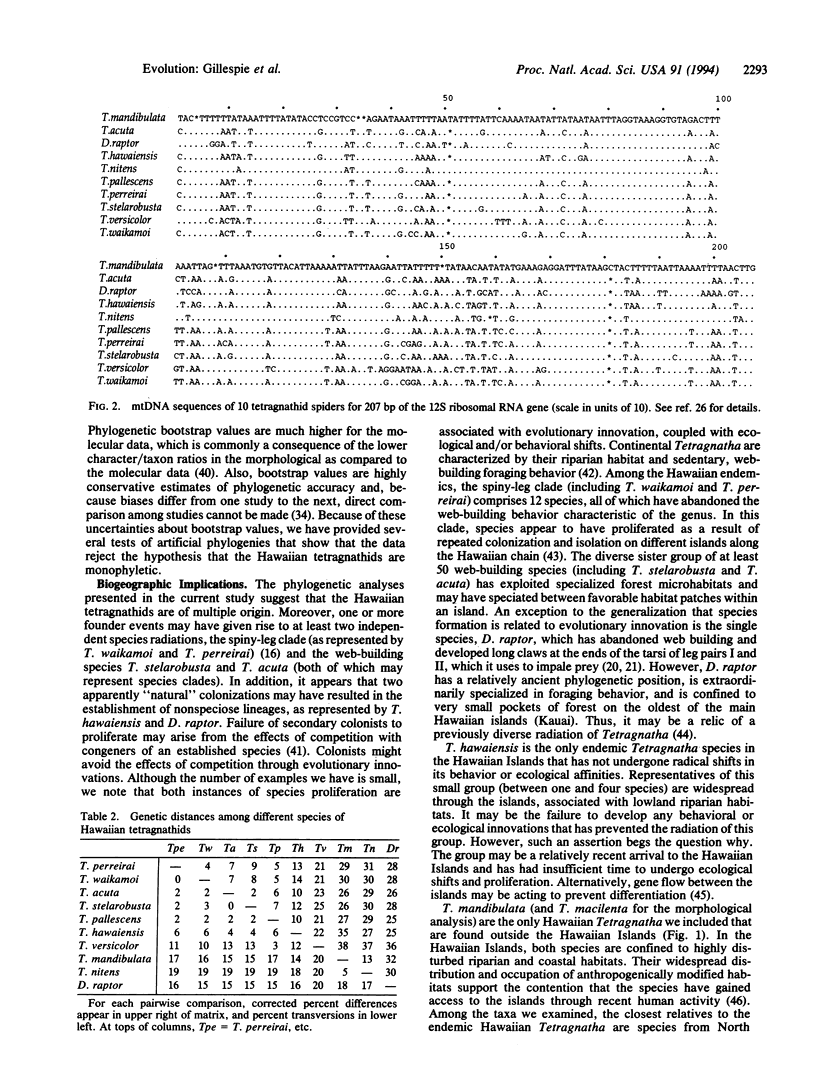
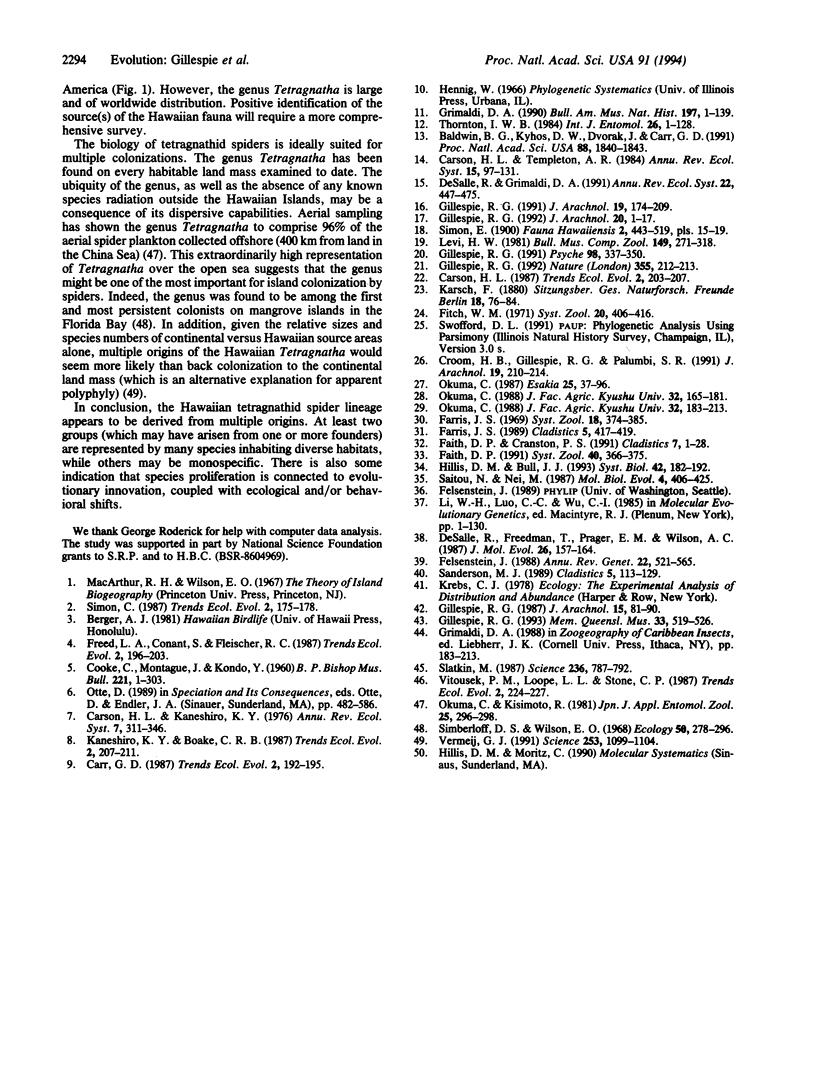
Selected References
These references are in PubMed. This may not be the complete list of references from this article.
- Baldwin B. G., Kyhos D. W., Dvorak J., Carr G. D. Chloroplast DNA evidence for a North American origin of the Hawaiian silversword alliance (Asteraceae). Proc Natl Acad Sci U S A. 1991 Mar 1;88(5):1840–1843. doi: 10.1073/pnas.88.5.1840. [DOI] [PMC free article] [PubMed] [Google Scholar]
- DeSalle R., Freedman T., Prager E. M., Wilson A. C. Tempo and mode of sequence evolution in mitochondrial DNA of Hawaiian Drosophila. J Mol Evol. 1987;26(1-2):157–164. doi: 10.1007/BF02111289. [DOI] [PubMed] [Google Scholar]
- Felsenstein J. Phylogenies from molecular sequences: inference and reliability. Annu Rev Genet. 1988;22:521–565. doi: 10.1146/annurev.ge.22.120188.002513. [DOI] [PubMed] [Google Scholar]
- Saitou N., Nei M. The neighbor-joining method: a new method for reconstructing phylogenetic trees. Mol Biol Evol. 1987 Jul;4(4):406–425. doi: 10.1093/oxfordjournals.molbev.a040454. [DOI] [PubMed] [Google Scholar]
- Slatkin M. Gene flow and the geographic structure of natural populations. Science. 1987 May 15;236(4803):787–792. doi: 10.1126/science.3576198. [DOI] [PubMed] [Google Scholar]
- Vermeij G. J. When biotas meet: understanding biotic interchange. Science. 1991 Sep 6;253(5024):1099–1104. doi: 10.1126/science.253.5024.1099. [DOI] [PubMed] [Google Scholar]


